If you like plants, you’ve probably wanted to bring a piece of the tropics into the comfort of your home and garden. Tropical plants can be absolutely delightful. The lush green foliage, the vibrant colors, and the exotic shapes are a delight to the senses, but many people assume they are difficult to grow outside their natural habitats. Wrongly assume, that is.
In reality, with a little effort and care, you can cultivate several tropical plants at home, adding a touch of the exotic to your décor.
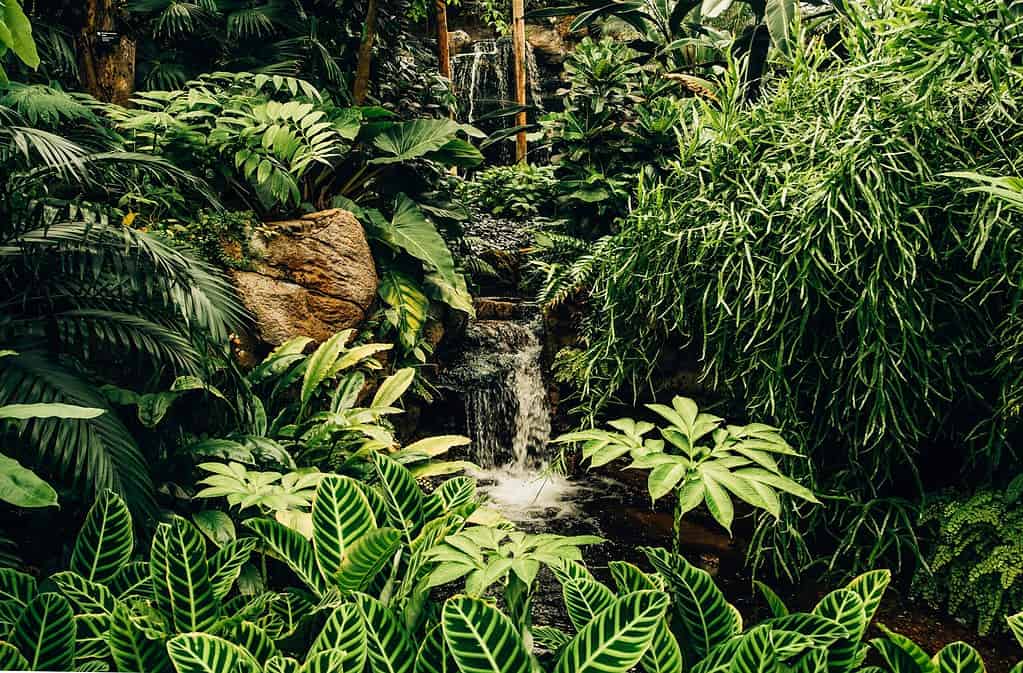
It’s remarkably common for people to think that you can’t grow them indoors. Surprisingly, a lot of people believe that tropical plants are just too finicky and require too much care to thrive, be it indoors or outdoors . However, both of those assumptions are simply not true!
Regardless of whether you live in a tropical area or not, with the right amount of light, water, and attention, you can grow a variety of tropical plants in the comfort of your own home. Granted, if you want to plant them in your garden, you need a bit of extra care; but if you want to grow tropical plants indoors, the world is your oyster.
Tropical House Plants – Can You Really Grow Them at Home?
Growing tropical plants indoors at home requires some care and preparation, however. You don’t need a special green thumb, but you need a bit of attention. It’s not rocket science, really. Keep in mind that you can also get a bit lucky or unlucky — sometimes, it’s hard to account for everything!
Tropical plants have specific needs. It may be hard to meet those needs in all climates, but it is possible. If you want them to succeed, you need to replicate these conditions (or something close enough). Oftentimes, this isn’t exact science, but more of an approximation.
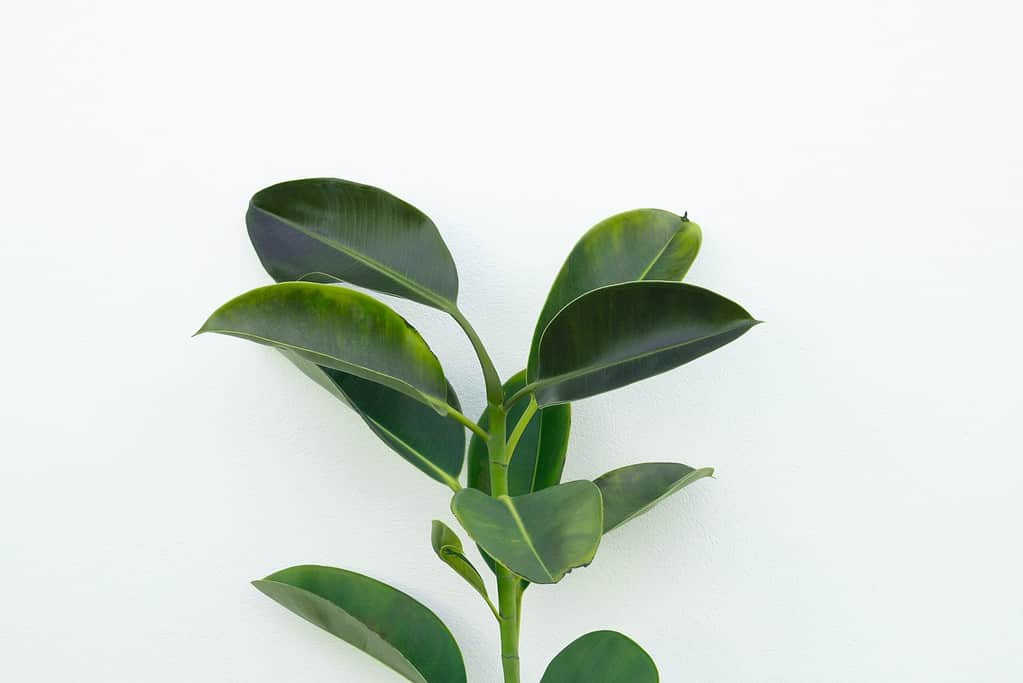
The term “tropical plants” encompasses a wide range of species that thrive in warm, humid environments, such as rainforests, jungles, and coastal regions. While some tropical plants are hardy enough to tolerate cooler temperatures, others require a constant warm temperature, high humidity, and bright light to thrive.
To grow tropical plants at home, you will need to recreate some of the tropical conditions these plants love so much. This may involve placing your plants near a sunny window or using artificial lights, providing regular watering and fertilizing, and ensuring proper drainage and air circulation. Depending on the plant, you may also need to mist the leaves, prune the stems, and repot the plant periodically.
You may get away with doing some or even none of those things. As with all plants, there’s a fair bit of experimenting, and a fair bit of luck involved as well. You can go the extra mile and buy some sensors for temperature and humidity, but in most cases, that’s just overkill and you don’t need it.
Let’s explore some of the best tropical plants you can grow at home, and how to care for them.
Types of Tropical House Plants
Elephant Ear Plant

There are a few plants called elephant ear plants. They are all tropical plants with large, heart-shaped leaves that resemble elephant ears.
These plants can grow up to 8 feet or 2.4 meters, making them an impressive addition to any room (although it’s unlikely that indoor plants will grow this much).
Elephant ear plants thrive in warm, humid environments, and require bright, indirect light to grow. They prefer moist, well-draining soil. You should water them regularly, but don’t water them too much as they are susceptible to root rot. In fact, overwatering is one of the most common mistakes you can do with this plant.
You can grow these plants indoors or outdoors. If you grow them outdoors, bring them inside during cold weather. Otherwise, if it gets too cold, it can kill them
Elephant ear plants are notable for another reason: researchers found that they can be used in high-level research to create scaffolds for human cells to grow on. Talk about multipurpose!
Mandevilla
Mandevilla, or Dipladenia, is a flowering vine native to South America that produces vibrant, trumpet-shaped flowers in shades of pink, red, and white.
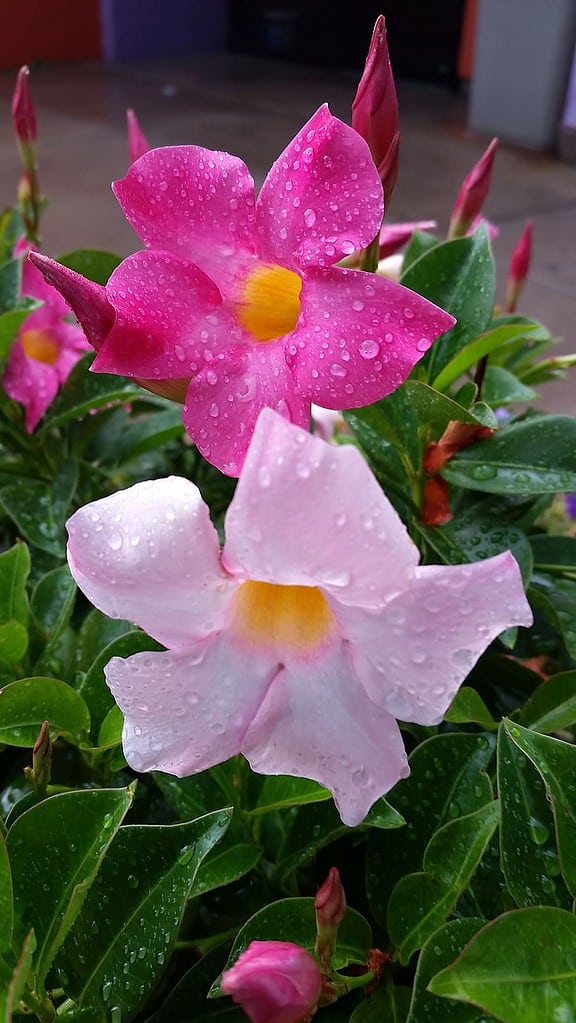
The mandevilla is a climbing vine that produces stunning trumpet-shaped flowers in shades of pink, red, or white. It’s perfect for adding a pop of color to a room, and it can be “trained” to climb up a trellis or wall. The plant prefers bright, indirect light and moist soil, and it can bloom year-round if given the right care. With its tropical beauty and easy-care nature, the mandevilla is a great choice for any home.
These plants can grow up to ten feet tall. They’re often grown on trellises or other support structures. Mandevilla requires bright, indirect light and regular watering.
Between waterings, allow it to dry out — don’t overwater it! You can grow it indoors or outdoors, but guess what? They also require protection from frost and cold temperatures.
The plant also creates strikingly fragrant blooms, and it can bloom continuously from spring to winter. It’s best to buy them as potted plants and, if you want to plant them outdoors, wait until late spring.
Heliconia
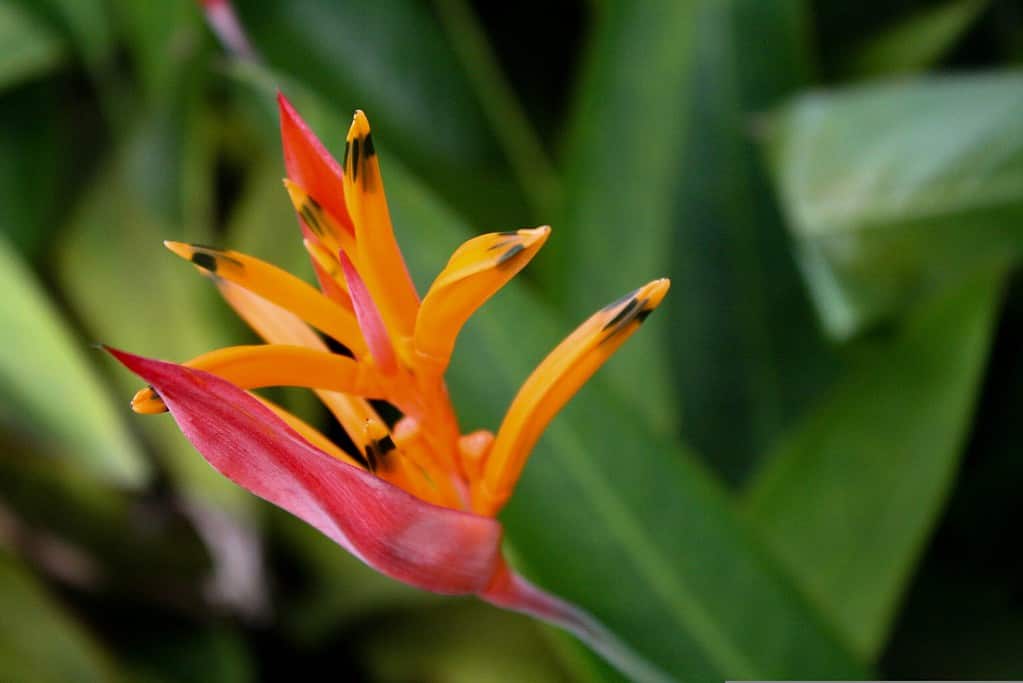
Heliconia, or lobster claw, is a tropical plant with long, curved leaves and bright, waxy flowers that resemble lobster claws. These plants thrive in warm, humid environments and require bright, filtered light to grow. They prefer a well-draining soil and should be watered regularly, but not overwatered, as they are susceptible to root rot. Heliconia can be grown indoors or outdoors, but they need protection from cold temperatures and wind.
Most species are considered vulnerable so you may be doing an environmental service by deploying them in your garden. The problem is that different heliconias prefer different conditions. None of them really like a lot of shade, but some like a bit of shade. You’re probably best off with well-draining soil with this plant. Don’t skimp on organic matter and keep sure that the soil is healthy and moist.
Lychee Tree
The lychee tree, or Litchi chinensis, is a tropical fruit tree that produces small, red fruits with a sweet, fragrant flavor. These trees can grow up to 40 feet tall — though it’s unlikely they’ll grow this much in your garden.
They require warm temperatures, high humidity, and plenty of sunlight to produce fruit. Lychee trees prefer well-draining soil and should be watered regularly, but not overwatered, as they are susceptible to root rot, particularly if there are oaks nearby.

Lychees have been grown for thousands of years because of the delicious fruits they make, but not all species make the familiar fruits. Even without the fruits, it’s a lovely-looking tree to beautify and bring a tropical air to your home or garden. There are numerous lychee cultivars, and even experts confuse them sometimes.
These trees can be grown indoors in a large container, but you really want to make sure they have tolerable temperatures over winter. Lychee trees must be overwintered at temperatures of 5 to 15 °C — and lower and you risk destroying them.
Hibiscus
Hibiscus, or Hibiscus rosa-sinensis, is a tropical plant with large, showy flowers in shades of red, pink, orange, yellow, and white. These plants also grow flowers that can be used to make deliciously fragrant tea.
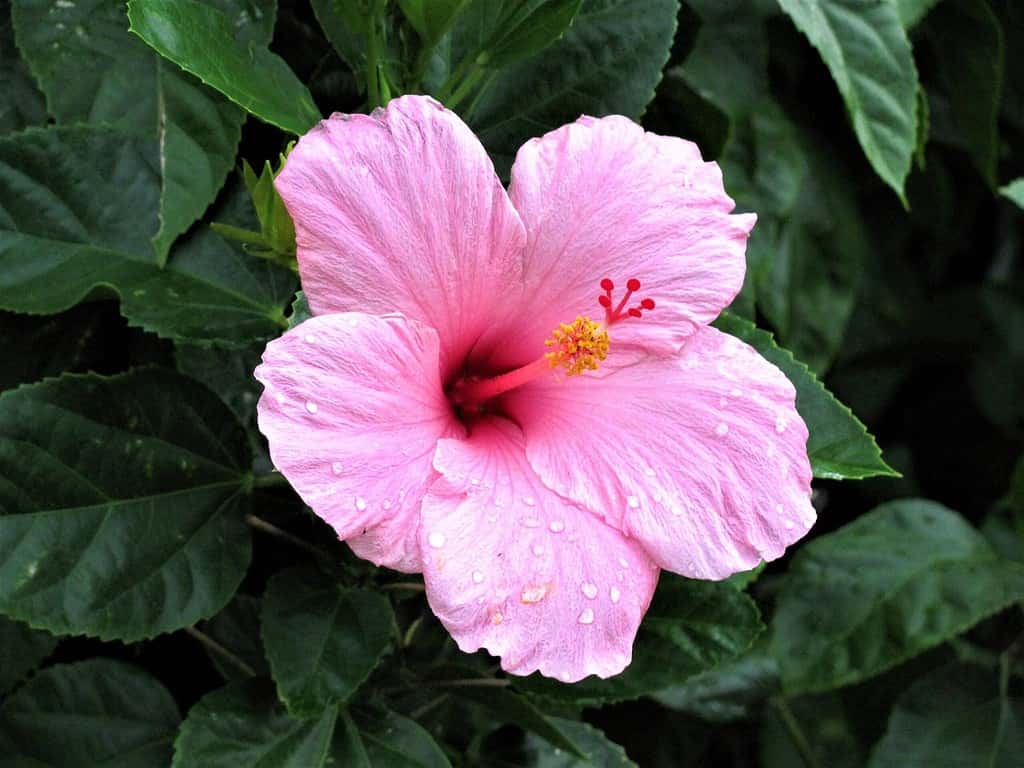
This plant loves its warmth and sun. Plant them in a place where they get as much sun as possible. But they hate wind — so shelter them from it. You’re probably best off using some organic fertilizer because if the soil is not right, hibiscus can have problems growing.
You can grow hibiscus indoors or outdoors. By now, you probably know the drill: you need to protect it from cold temperatures and frost. Hibiscus flowers can also be used to make tea, which has a tangy, fruity flavor and is rich in antioxidants. They do well in loam-based pots or in gardens with loamy soil. They don’t really like peat compost, so stay clear from that as well.
The hibiscus is a classic tropical plant that produces stunning, brightly colored flowers in shades of pink, red, orange, and yellow. It’s perfect for a pot as well, though it won’t grow into a bush, as it does outside. The plant prefers bright, indirect light and moist soil, and it needs to be watered regularly to maintain its high humidity needs. With its tropical beauty and easy-care nature, the hibiscus is a great choice for any home.
Other Tropical Flowers
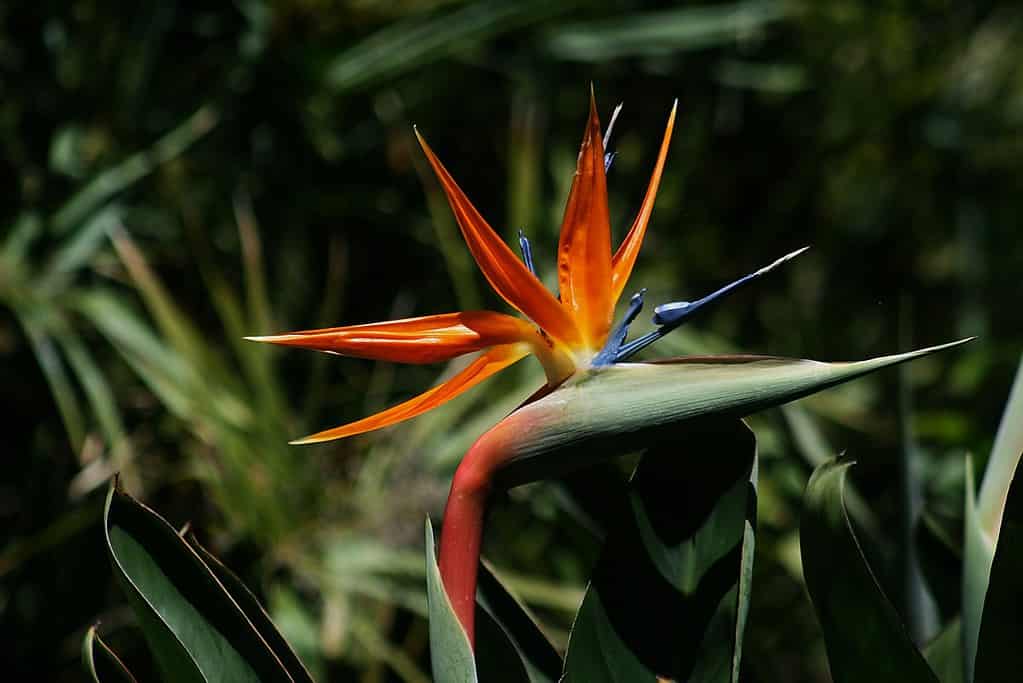
In addition to hibiscus, there are several other tropical flowers that can be grown at home, adding a burst of color and fragrance to your living space. These include:
- Bird of Paradise (Strelitzia reginae): a striking plant with orange and blue flowers that resemble a bird in flight. Plant “birds of paradise” in areas with a lot of light. Water them regularly, but allow them to dry out slightly between waterings. They prefer well-draining soil and can be grown indoors or outdoors in warm climates.
- Bromeliads: a family of plants that includes several species with colorful, exotic-looking flowers. Bromeliads thrive in warm, humid environments and require bright, indirect light to grow. Bromeliads can be grown indoors or outdoors, but they need protection from cold temperatures and frost.
- Plumeria: a tropical tree with fragrant, white or pink flowers. In Hawaii, Plumeria is used to make leis — the traditional garland. Plumeria trees require warm temperatures and plenty of sunlight to produce flowers. Plumeria trees can grow in large containers indoors or outdoors in warm climates.
- Orchids: this diverse family of plants includes several species with beautiful, exotic-looking flowers. Orchids require bright, filtered light and regular watering, but should be allowed to dry out slightly between waterings. They can be grown indoors or outdoors in warm climates. Orchids can be challenging to grow, but with the right care, they can be one of the most rewarding tropical plants to cultivate.
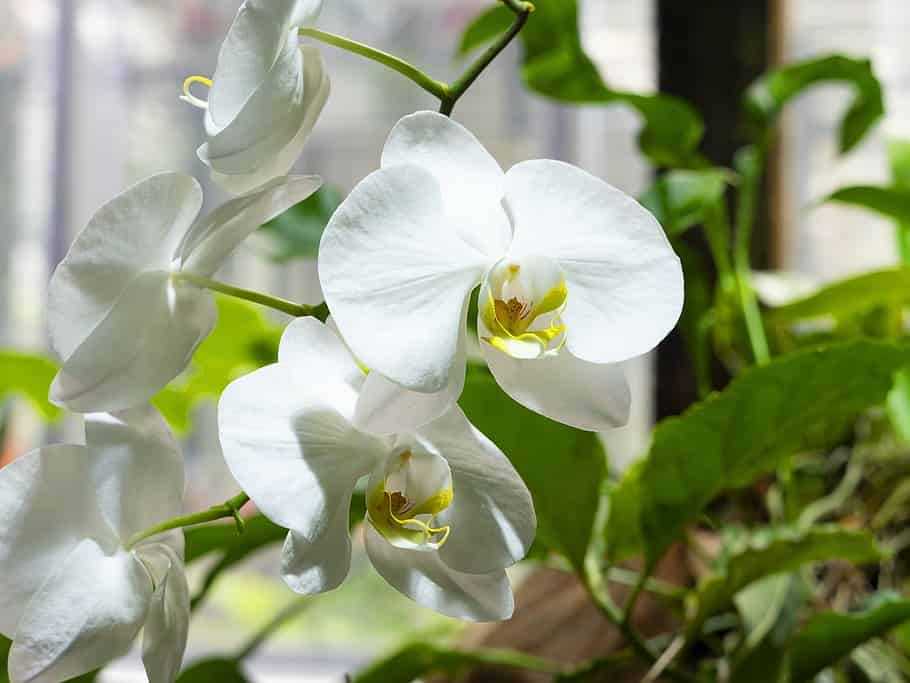
Go on, try your green thumb
We can’t possibly go through all the tropical plants you can grow at home and provide details for all of them. Thankfully, there’s an endless stream of advice on the internet, tailored for every individual plant. Some of it is excellent; some is less so, but can still be useful. It’s up to you whether you want to book up on the specifics of individual plants or whether you want to try your luck.
If you don’t want to spend too much time reading up, here’s the rule of thumb: a lot of sun, a lot of moisture, not much wind and good, quality soil. That should work for a large part of plants in the tropics.
Growing tropical plants at home can be a fun and rewarding experience, bringing a touch of the exotic into your living space. With a little planning and care, you can cultivate several species of tropical plants, from large trees to small, delicate flowers. Whether you choose a hibiscus, a mandevilla, or a lychee tree, each tropical plant has its unique beauty and character, reminding us of the diversity and wonder of the natural world.


